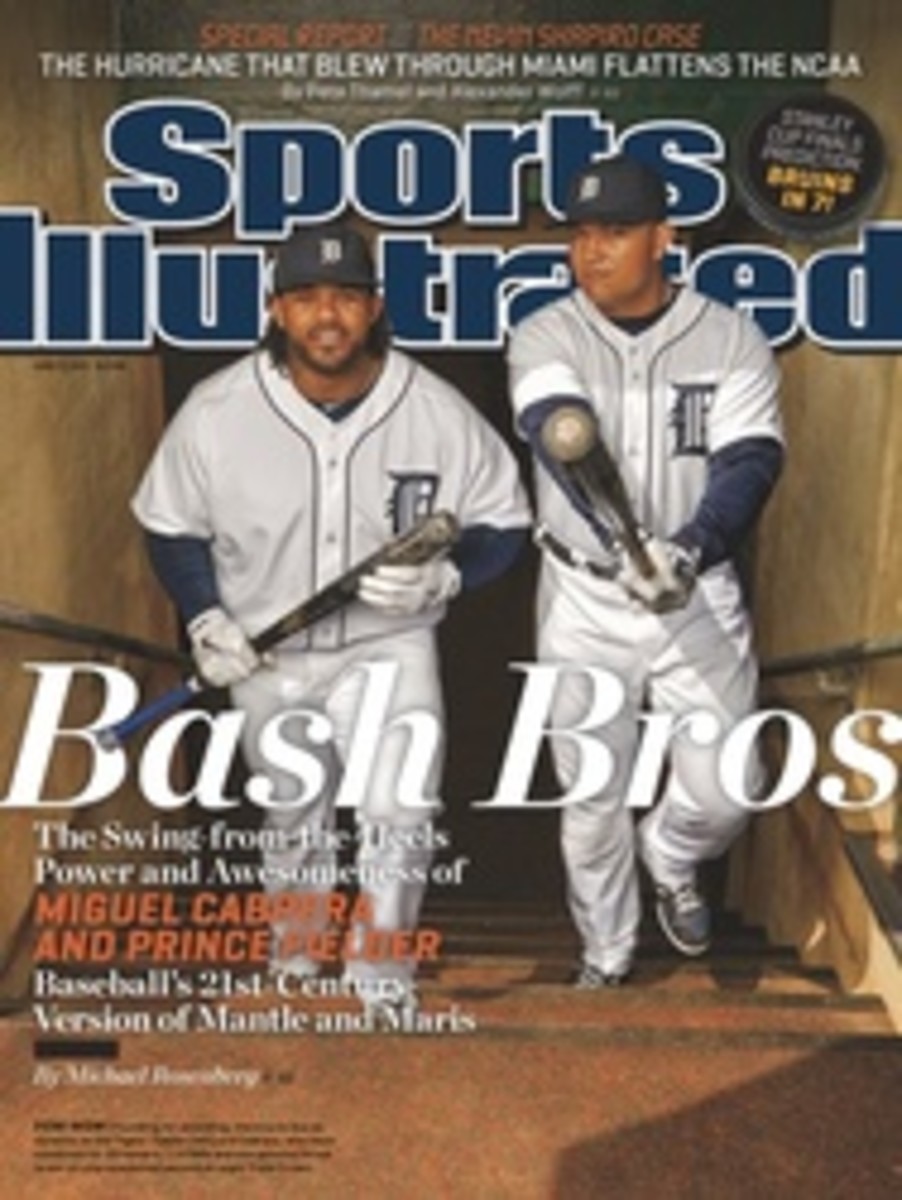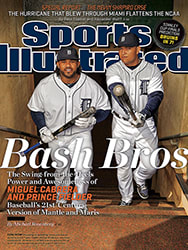
Danger in The Grass
Merion is golf's Fenway Park. It's a rolling and compact course on just 111 acres, surrounded by split-level houses and old stone mansions, bisected by a public road and a creek, near a train station and main-drag shopping and about eight miles west of the steps of the Philadelphia Museum of Art, where Rocky did his training. It's an oasis of charm and grace.
All that is wonderful, except modern golf, like a lot of modern things, has little use for charm and grace. Bubba Watson and the Bombers have a big gig at Merion next week—the 113th U.S. Open!—and the question is, Can the stage contain them?
Those radicals at the USGA have brought the national championship to Merion Golf Club for the first time since 1981, when David Graham of Australia put on a shotmaking clinic and won by three. Ten years before that, Lee Trevino beat Jack Nicklaus in a playoff to win his second Open. In 1950, Ben Hogan won a U.S. Open 16 months after (all together now) a near-fatal car crash. The place is golf.
Or it was. In '50 and '71 and '81, the game was played with persimmon drivers, steel shafts and mushy balata balls, and by men who looked like your uncle taking a break from the barbecue. Now everything in golf is big and brawny and machine made: the drivers, the golfers, the courses. If Merion plays soft next week—and with all the recent rain it won't play super fast—its subtle challenges, shots that have tested golfers since the Bobby Jones era, will be diminished. The ball will stop on command.
With its five par-4s less than 370 yards, Merion might prove obsolete for the pros, but that doesn't mean anything to us.
If you're an 85 shooter at your home course, you could play Merion, as it's set up this week, every day through Labor Day and never break 105, even though at 6,996 yards it is the shortest U.S. Open course in 12 years. The chasm between golf's high priests and us has never been more obvious, and the Open at Merion will surely demonstrate this again, with feeling.
The problem isn't the golf course but, in large part, the modern golf ball, which sails off into space when struck by a big-headed titanium driver traveling 120 mph. Golfers have been introduced to a new word in the past year or so, bifurcation, trotted out whenever the grill-room chat turns to whether the rules (like anchored putting) or equipment regulations should be different for elite players and duffers. This 2013 Open, on a short par-70 course, could (ideally) be a tipping point, and prove to many the wisdom of a tweaked game in which the best players would be required to use a ball that doesn't go so far.
In Hogan's day, Merion's spectacular 16th hole, requiring a second-shot carry over an abandoned quarry, was played with a driver and a mid-iron. Bubba and the other long whackers will likely play it with an iron off the tee and a wedge into the green. That's an insult to Hugh Wilson, Merion's genius amateur architect. More significantly, it means that golfers at the 2013 Open will be tested in far different ways than they were in the last three Opens at Merion.
In terms of land and water conservation, speed of play and cost per round, isn't a 111-acre playing field hugely preferable to the 220-acre sites on which most big-time tournaments are played? Merion could show us that golf's future is in its past.
Regardless of all that, people are way into this Open at Merion. When the golf talk this year has not been about deer-antler spray or fried chicken or incorrect drops, the Open at Merion has dominated the convo. "I've been, I think, to 25 U.S. Opens," says Mike Davis, the executive director of the USGA, "and I feel more sense of excitement for this one than I've ever felt. And a big part of that is that there's a whole generation of golfers who have heard all these wonderful things about Merion, but have never had a chance to see it." And now they will. The Merion Open will be a mystery, a historical drama and a reality show in one.
Tiger Woods, golf nerd, understands all this as well as anybody. His first tour of Merion came in a practice round on a rainy Tuesday last month when he was the only player on the course. He played the first, a drivable par-4 with a cozy veranda right beside the tee. He played the second, a par-5 he will likely reach in two. He made the short walk to the third hole, a 256-yard par-3 (one of three wildly long par-3s), and teed off with a five-wood and then a three-wood. He said, "Can you imagine what this hole was like for Hogan?" Exactly.
He wanted to know how many fairways and greens Graham hit in his final-round 67 in '81 that to this day is regarded as one of the great shotmaking exhibitions ever. (Thirteen of 14 fairways, 16 of 18 greens, both misses settling on the collar.) A young assistant pro from Merion, Sean Palmer, walked with Woods and his caddie, Joe LaCava. Palmer told LaCava about his plans to have some buddies come over for pizza and beer and to watch a replay of the '71 Open. (Trevino wins, every time.) Woods, walking a few yards ahead of them, said, "That's cool."
Come Father's Day and the grand finale, it will be surprising if Woods is not in contention. For one thing, driver is the most unreliable club in his bag, and he won't need to use it too often. For another, Merion relentlessly tests thinking and strategy and patience, and in those subject areas Woods's golfing IQ is in the genius range.
On the other hand, Woods has won his three U.S. Opens at public courses—Pebble Beach in 2000, Bethpage in '02, Torrey Pines in '08—and that might not be a coincidence. As a matter of recreation, Woods never goes out of his way to play the elite, old-line clubs, such as Merion, where his father, Earl, could only dream about teeing it up for most of his life. On that rainy Tuesday, Woods arrived in a cloak of secrecy, played with a purpose and left. No chitchat with the staff, no visit to the clubhouse, nothing like that.
Phil Mickelson, as you might imagine, had a different approach. He stayed for two days two weeks ago; played twice, once with the head pro, Scott Nye; took a bunch of people out for dinner, including the club archivist, John Capers; and had himself a good time. He told everybody how much he loved the course, with its canted fairways and dozen or more blind shots.
The U.S. Open, of course, is the gaping hole in Mickelson's résumé. (He has five seconds.) His birthday falls on U.S. Open Sunday. He turns 43. That's not old anymore at regular Tour events, but it is at a U.S. Open. The oldest Open winner is Hale Irwin, who won in 1990 at 45. The winner next week, based on Merion's history, will almost surely be a name player.
Last Monday, 10 days before the first shots, Justin Rose, an English golfer who lives in Orlando, was playing Merion for the first time. The heaving land and unpredictable greens reminded him of the courses near London. "It's nice to be out here early, without 10,000 people around sticking Sharpies at you, and getting a chance to fall in love with the course," he said. His words brought to mind what Trevino said upon winning in '71: "I'm in love with Merion, and I don't even know her last name."
Rose stopped in the middle of the 18th fairway to play a shot from the plaque that commemorates a one-iron Hogan hit into the green in the fourth round of the '50 Open. That's what Mike Davis, from the USGA, was hoping would happen, that today's golfers would connect the past, the present and the future. In golf, as in life, you have to know where you've been to know where you're going.
Hogan would sometimes walk holes backward, to better understand their demands. Woods did something similar during his visit, on each hole taking a long look behind him, toward the tee, to process the whole thing. Woods is chasing Nicklaus, but his approach to the game brings Hogan to mind. "I'm not one of those swing fanatics who is obsessed with Hogan," Rose said. "But it is amazing—you come here and Hogan is in the conversation. He's in the air."
On the third hole, a 256-yard par-3, Woods hit a three-wood. He said, "Can you imagine what this hole was like for Hogan?" Exactly.
PHOTO
Photograph by BETTMANN/CORBIS
PHOTO
SPORTS LEGENDS AND WORLD HEROES @HYPESKIN.COM
CLASSIC POSE Rose (right) dropped a ball next to the plaque commemorating Hogan's famous one-iron from 213 yards. Today, it's a six-iron shot—or less.
PHOTO
MICHAEL BAMBERGER/SPORTS ILLUSTRATED (ROSE)
[See caption above]

